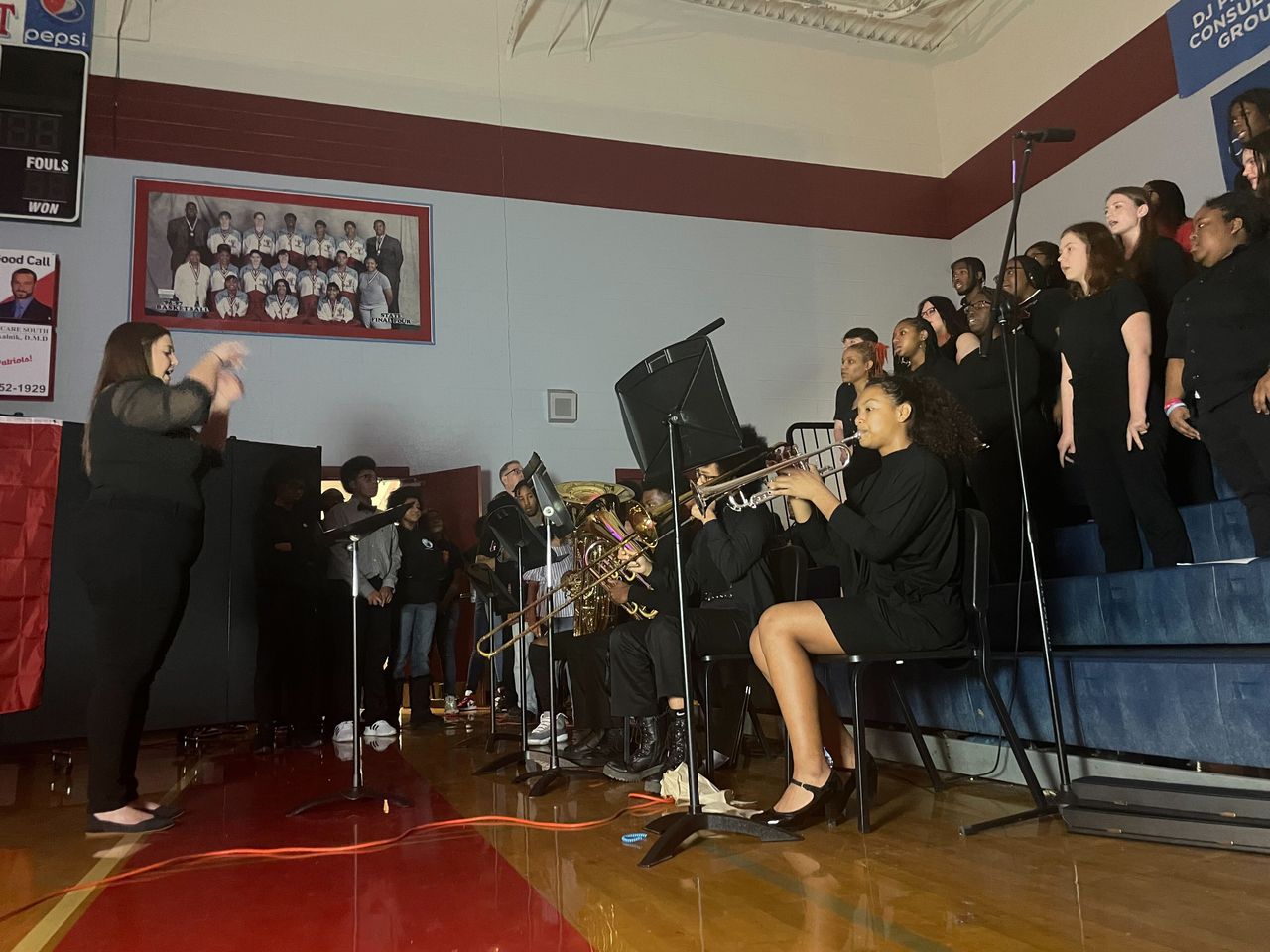How this Alabama school celebrated Black history after a student walkout
Jamiyah Brown showed up to school Wednesday sporting a white and pink Las Amigas Juniors T-shirt. As the president of the Tuscaloosa club, she had spent months preparing for their debut during Hillcrest High School’s Black History Month performance.
But she’d have to watch from the crowd.
The Tuscaloosa County senior, who led a walkout earlier this month to bring attention to racism at the school and alleged censorship of a Black History Month student performance, said she was frustrated with how school leaders treated her in the aftermath.
Administrators, she claimed, barred her from taking part in the show after she spoke to the news, and had allegedly threatened to discipline her that morning if she took part in the show.
“I didn’t think this was gonna be this hard today,” Brown said as she walked into the school building Wednesday morning.
In early February, reports surfaced that a white Hillcrest administrator had discouraged students from including events prior to 1970 in the upcoming production. According to Brown, an assistant principal advising the program told the group to focus on more recent Black figures, like “Beyoncé,” and claimed that “old stuff” made people uncomfortable.
Tuscaloosa County Schools officials have continually denied any censorship, and have since said that they are working on a plan to address racism in the school.
Student complaints prompted a swift community response from church leaders, civil rights advocates and the local chapter of the NAACP, many of whom were in attendance Wednesday.
Hillcrest High School students put on a Black History Month performance Wednesday, Feb. 22, 2023. Rebecca Griesbach/AL.com
They lined chairs and bleachers in the Hillcrest High School gym as student members of the Las Amigas Juniors and other groups strutted and stomped across the court. Brown cheered on her friends from the crowd.
“We’re going to make it through our struggles and our differences, because right now we are united and I feel that energy,” science teacher Shanel Lightfoot said as the crowd quieted down. “Don’t you feel it?”
The rest of the show featured various art forms and types of music, including Afro-Caribbean dance, a Jackson Five ensemble, rhythm and blues throwbacks and a performance from the school’s dance line, “Black Girl Magic.”
Many of those acts were planned ahead of time. Until about halfway in, when the section on slavery came.
“We can’t really talk about our culture without talking about slavery,” said student Adia Lowther. Students clapped and cheered.
In a 30-second speech, she explained how enslaved Africans were first brought to America in 1619 and were beaten and treated as subhuman, even after the 13th Amendment was passed.
A pair of dancers in white flowy pants prepped for their performance to “It Is Well With My Soul.” In the bleachers, band members got ready for a rendition of Thomas Dorsey’s “Precious Lord, Take My Hand.”
“So yeah, welcome to the next thing: It’s America,” Lowther said.
Lowther’s speech was added into the program after the protest this month, Brown said.
Other student organizers told reporters that despite difficulties earlier on, they were proud of the finished product.
“There were a lot of bumps in the road, but that didn’t stop us,” said Jada Holt.
Senior Reginal King, Jr. said community support – and students like Brown – made countless hours of rehearsing worth it.
“I’m just so proud that we were able to overcome everything that we’ve faced in the past few months,” he said. “I’m proud of everybody that’s been involved in everything. I’m especially proud of Jamiyah Brown, because she is the person that had the voice and was able to put everything together. She brought the whole community out and I’m just grateful for it.”
Brown said she was proud of her classmates, too, and hopes that future productions – including an independent performance in the works – will be more reflective of student interests.
“We just pray that the administrators look at us and they see that we have feelings as children and that there’s a need to express ourselves, and to realize that there is a problem,” she said. “And the students are gonna continue to fight to change the problem.”
